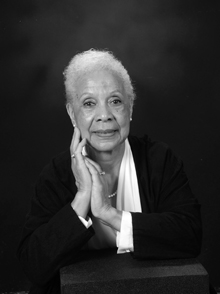To the great pleasure of the joyous audience attending this Carnegie Hall concert, the ninety-three members of The University of Notre Dame Concert Band made a mighty sound. And the word concert alone does not fully describe this event, as it assumed, at different times, aspects of a concert, a college reunion, a pep rally. Let it be said at the outset that The University of Notre Dame Concert Band is a virtuoso ensemble. The technical skill and ensemble cohesiveness of these young players is mind boggling. The thirteen flutes in unison play as one, as do the fourteen clarinets. The forty-one member brass choir sounds great at all dynamic levels, when playing both solemn chorale-like passages and wild jazzy riffs. It was an evening of sonic splendor.
We began with the world premier of Joseph Turinn’s “Fanfare and Prelude.” Director of Bands Kenneth Dye conducted this and three other works on the concert. Five assistant conductors, Larry Dwyer, Sam Sanchez, Matt Merten, Emmett O’Leary and Alison Thigpen shared the remaining nine works. “Fanfare and Prelude,” the following work, Clifton Williams’ “Dramatic Essay,” and “Fandango,” another work by Mr. Turrin, all seemed to have similar sonic structures. All had a fast brassy beginning, a softer lyric middle section with prominent woodwinds, a loud and fast ending. Both of Mr. Turinn’s works also had an uplifting brass choral-like passage towards the end, one which would not have been out of place in a movie score. They also shared a similar harmonic and rhythmic vocabulary. The dissonances were fairly painless, the lyric melodies pop-tune-like, the beginnings and endings jazzy.
“Dramatic Essay” featured fine playing by guest artist, trumpeter Philip Smith. But with all the excellent trumpeters in the band, I’m not sure why they had to go out and get a star. (Mr. Smith is principal trumpet of the New York Philharmonic.) In “Fandango,” Mr. Smith was joined by the Notre Dame Concert Band’s principal trombone, Anthony Parish. Mr. Parish more than held his own. In fact, his was the most impressive solo playing of the evening – warm, expressive, beautifully phrased. I loved his judicious use of vibrato.
On the first half we heard both arrangements and easy listening works written in the twenty and twenty-first centuries. There was a sameness about much of this music. For me, the concert came to life three works into the second half, with the Notre Dame New Orleans Brass Band’s electrifying performance of conductor Matt Merton’s arrangements of What a Friend We Have in Jesus and I’ll Fly Away. The band entered from the rear of the hall and marched down the aisle. What visceral excitement, what authenticity! I did feel there was no reason for the members of the concert band to join in after the marchers reached the stage, for it only watered down the unique sound we had been hearing.
The concert band morphed into a very good and very large “big band” with stylistically impeccable performances of Larry Dwyer’s transcription of Harold Arlen’s “When the Sun Comes Out” and Kenneth Dyes tribute to Benny Goodman’s 1938 Carnegie Hall Concert, “Benny Goodman in Concert.”
The entire audience then rose to their feet for the Notre Dame Alma Mater. And how else could this concert end, but with a rip-roaring rendition of the great “Notre Dame Victory March”? It was conducted by TV personality and Notre Dame Alumnus Regis Philbin.




 This was my first visit to Le Poisson Rouge, a multimedia art cabaret which has become the hip and trendy place to hear classical music in New York. The audience sat at tables and could eat and drink before, during and after the performance. Fortunately one heard very little table noise, and the wait-staff was quite discrete. I might add that the mac and cheese was delicious.
This was my first visit to Le Poisson Rouge, a multimedia art cabaret which has become the hip and trendy place to hear classical music in New York. The audience sat at tables and could eat and drink before, during and after the performance. Fortunately one heard very little table noise, and the wait-staff was quite discrete. I might add that the mac and cheese was delicious. An adoring audience braved a very heavy rain to attend this concert by soprano Mareda Gaither-Graves. They were amply rewarded. The recital began with a thrilling performance of Beethoven’s concert aria “Ah! perfido.” This is a very demanding work, one in which the soloist is asked to exhibit many aspects of the singers art. And Ms. Gaither-Graves was more than up to the task. She is secure in all part of her range and her voice is well supported at all dynamic levels, from floating pianissimos to spine-tingling fortissimos.
An adoring audience braved a very heavy rain to attend this concert by soprano Mareda Gaither-Graves. They were amply rewarded. The recital began with a thrilling performance of Beethoven’s concert aria “Ah! perfido.” This is a very demanding work, one in which the soloist is asked to exhibit many aspects of the singers art. And Ms. Gaither-Graves was more than up to the task. She is secure in all part of her range and her voice is well supported at all dynamic levels, from floating pianissimos to spine-tingling fortissimos.